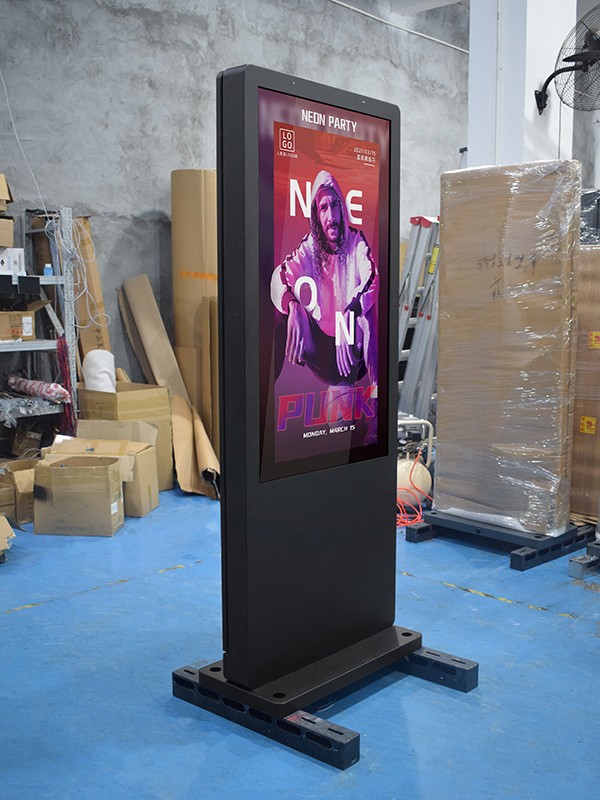
Does Digital Signage Increase Sales?In the bustling landscape of modern retail and business environments, the quest for innovative ways to captivate customer attention and drive sales remains a constant pursuit. Among the myriad of strategies employed, digital signage has emerged as a prominent tool, transforming the way information is communicated and experienced. But does it actually increase sales? To delve into this query, we must explore the multifaceted nature of digital signage, its impact on consumer behavior, and the tangible outcomes it produces for businesses across various industries.

Digital signage refers to the use of electronic displays, such as LCD, LED, or projection screens, to present information, advertisements, or other messages in a dynamic and engaging format. Unlike traditional static signs, digital signage offers the flexibility to update content instantaneously, adapt to real-time conditions, and interact with audiences through touchscreens or mobile integration. This technology has permeated diverse sectors, from retail stores and restaurants to corporate offices, healthcare facilities, and public transportation hubs, each leveraging its capabilities to enhance the customer experience and drive commercial success.
One of the primary mechanisms through which digital signage influences sales is by capturing and retaining customer attention. In a world where consumers are constantly bombarded with information, standing out is paramount. Digital displays, with their vibrant colors, motion graphics, and the ability to deliver targeted messages, are inherently more eye-catching than static posters or banners. Studies have shown that digital signs can attract up to 400% more views than their static counterparts, significantly increasing the likelihood that a message will be seen and processed by potential customers.
Moreover, digital signage enables businesses to tailor their messaging to specific audiences at precise moments. Utilizing data analytics and customer profiling, retailers can display personalized content that resonates with individual shoppers' preferences, past behaviors, or even their current location within a store. For instance, a grocery store might promote a special offer on dairy products to a customer who frequently buys milk, or a fashion retailer could showcase seasonal trends to someone browsing the latest arrivals. This level of personalization not only enhances the shopping experience but also increases the relevance of the offers, making them more likely to convert into sales.
Beyond attracting attention and personalizing content, digital signage can also stimulate impulse buying. By strategically placing digital displays at key points within a store—such as near checkout counters, entrances, or high-traffic areas—businesses can present last-minute offers, limited-time promotions, or complementary products that might pique customers' interest. The dynamic nature of these displays allows for quick updates, meaning retailers can capitalize on trending items or respond to inventory changes in real-time, encouraging spontaneous purchases.
The interactivity of digital signage further amplifies its sales-boosting potential. Touchscreens, QR codes, and Near Field Communication (NFC) technology enable customers to engage with content directly, whether it's exploring product details, viewing tutorials, or participating in interactive games and promotions. This not only prolongs their engagement with the brand but also creates a memorable experience that can foster loyalty and repeat business. For example, a beauty store might use a touchscreen kiosk to offer virtual makeup try-ons, allowing customers to experiment with different products without physical application, thereby increasing their confidence in making a purchase.
In addition to direct sales impacts, digital signage contributes to brand awareness and perception. High-quality displays that showcase a brand's story, values, and unique selling points can elevate its image and differentiate it from competitors. Consistently presenting a professional, engaging, and up-to-date message reinforces brand identity and fosters trust among consumers. A strong brand presence is crucial for long-term success, as it influences purchasing decisions and encourages word-of-mouth referrals.
The versatility of digital signage extends to its ability to enhance the overall customer experience. In environments such as restaurants, digital menus can provide detailed descriptions, nutritional information, and even visual representations of dishes, enhancing the dining experience and facilitating informed choices. In healthcare settings, digital signs can guide patients through facilities, provide wait times, and disseminate health education content, improving patient satisfaction and operational efficiency. These enhancements, while not directly measurable in sales figures, contribute to a positive customer journey, which is essential for fostering loyalty and repeat visits.
To quantify the impact of digital signage on sales, numerous case studies and industry reports have been conducted. While the specific results vary based on factors such as industry, target audience, and the effectiveness of the content strategy, a common thread emerges: businesses that implement digital signage often report increased sales, higher average transaction values, and improved customer satisfaction. For instance, a retail store might see a 30% increase in sales for promoted items when using digital signage compared to traditional signage. Similarly, restaurants that incorporate digital menus have reported an uptick in order sizes and customer throughput.
It's important to note that the success of digital signage is not solely dependent on the technology itself but also on the quality and relevance of the content being displayed. Effective content strategy, regular updates, and a deep understanding of the target audience are crucial for maximizing the return on investment. Businesses must also consider the optimal placement of displays, ensuring they are visible to the right people at the right times.
In conclusion, digital signage is a powerful tool that, when utilized effectively, can significantly increase sales. Its ability to capture attention, personalize messaging, stimulate impulse buying, foster brand loyalty, and enhance the customer experience makes it a valuable addition to any business's marketing arsenal. As technology continues to advance and consumer expectations evolve, digital signage will undoubtedly play an increasingly central role in driving commercial success across diverse industries. By embracing this dynamic medium and continually refining content strategies, businesses can harness its full potential to engage customers, influence purchasing decisions, and ultimately, boost sales.
Current article link: https://www.lcdkiosk.com/news/479.html

Tel
